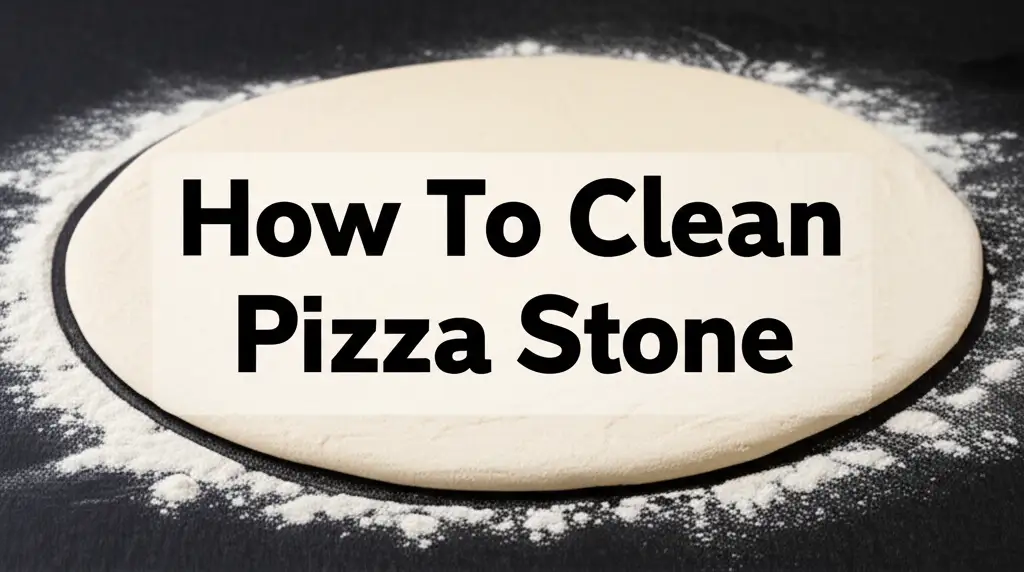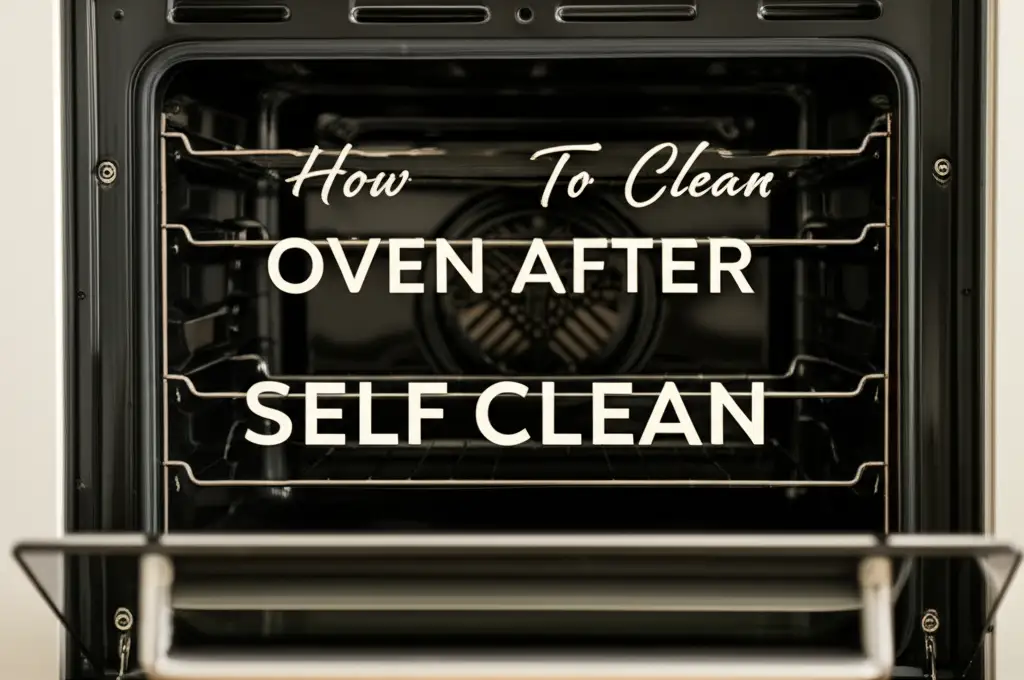· Kitchen Cleaning · 12 min read
How To Clean Pizza Stone

Cleaning Your Pizza Stone: A Comprehensive Guide
A pizza stone is a true kitchen hero. It helps us create crispy, restaurant-quality pizza crusts right at home. But over time, constant use leaves behind burnt bits, cheese residue, and dark spots. Cleaning a pizza stone properly ensures its longevity and maintains its incredible performance. Many people wonder about the best way to clean pizza stone without damaging it.
Cleaning a pizza stone is different from cleaning regular bakeware. You cannot just scrub it with soap and water. A pizza stone is porous; it absorbs liquids and flavors. Using detergents will ruin its non-stick properties and transfer soapy tastes to your next pizza. This guide provides simple, effective methods for cleaning your pizza stone safely. We will explore various techniques, from everyday maintenance to tackling stubborn stains. You will learn the dos and don’ts of stone care, ensuring many more delicious pizzas.
Takeaway:
- Always let your pizza stone cool completely before cleaning.
- Avoid using soap or harsh detergents on your pizza stone.
- Scrape off food bits and use a stiff brush or damp cloth for cleaning.
- Ensure the stone is completely dry before storing it.
- Dark spots are normal and improve the stone’s performance.
To clean a pizza stone, first let it cool completely. Scrape off large food particles with a plastic scraper or spatula. Use a stiff brush or a damp cloth without soap to remove stuck-on residue. Avoid harsh detergents as the porous stone absorbs them, affecting taste. Air dry thoroughly before storing it.
Understanding Your Pizza Stone Material
Knowing your pizza stone’s material helps you clean it correctly. Pizza stones come in different types, each with unique properties. Most common stones are made from cordierite, ceramic, or clay. Each material handles heat and cleaning methods slightly differently.
Cordierite stones are very durable. They resist thermal shock well, meaning they handle quick temperature changes without cracking. These stones are popular for high-heat cooking and withstand rigorous use. Cleaning cordierite often involves just scraping and brushing. Many high-quality stones, like those from Ooni, use cordierite for superior heat retention and durability. If you own an Ooni, you might find specific tips on how to clean Ooni stone useful.
Ceramic and clay stones are also effective but more prone to cracking. They tend to be more porous than cordierite. This means they might absorb liquids more readily, making soap use even more detrimental. Pampered Chef, for example, makes popular ceramic baking stones that require specific care. Understanding how to properly clean a Pampered Chef stone ensures it lasts for years. Regardless of material, the core principle remains: avoid soap, allow cooling, and dry completely.
The Golden Rule: No Soap, Please!
This is the most critical rule when you want to clean pizza stone. Many people think soap is necessary for clean dishes. However, soap is the enemy of a pizza stone. Pizza stones are highly porous, similar to unglazed pottery. They absorb whatever liquid they come into contact with.
When you use soap, the stone soaks up the soapy water. This soap will then leach out into your food the next time you use the stone. Imagine your delicious homemade pizza tasting like dish soap – not appealing at all! This absorption also degrades the stone’s natural non-stick surface, built up over time from cooking oils.
Instead of soap, simple water and mechanical scrubbing are your best tools. The high heat of the oven actually sanitizes the stone during cooking. Any bacteria or food particles are carbonized at high temperatures. Focus on removing physical debris, not on making the stone look brand new. A well-used pizza stone often has dark, seasoned spots. These spots are a sign of good use and actually improve the stone’s non-stick properties and heat distribution. Embrace the seasoning, do not try to scrub it away.
Basic Cleaning Steps for Everyday Use
Regular maintenance keeps your pizza stone in top shape. Following simple steps after each use prevents major build-up. I always make sure the stone cools down completely first. Trying to clean a hot stone can cause thermal shock and cracking. Give it at least an hour, or even let it sit overnight.
Once the stone is cool, use a plastic or metal scraper to remove any large, stuck-on food bits. A bench scraper or a spatula works perfectly for this. Gently push off any hardened cheese, dough, or burnt toppings. Be firm but avoid gouging the stone’s surface. If you have trouble, sometimes a little warm water can help loosen tough spots, but do not soak the stone.
Next, I use a stiff nylon brush or a dedicated pizza stone brush. Brush away any remaining crumbs or fine residue. This step helps remove carbonized bits without scratching the surface. If needed, a slightly damp cloth can wipe down the surface. Ensure the cloth is only damp, not wet. After wiping, allow the stone to air dry completely. This might take several hours, or even a full day. I usually stand mine on its side to maximize air circulation. Ensure it is bone dry before storing or reusing it to prevent mold or cracking.
Tackling Stubborn Stains and Burnt-On Residue
Sometimes, pizzas go wrong, leaving truly stubborn stains. Do not despair; there are ways to clean pizza stone even with tough messes. These methods require a bit more effort but still avoid harmful chemicals. One effective method uses a metal spatula or scraper more aggressively. You can also use a dull knife or a specialized stone scraping tool. Angle the tool slightly and push firmly to lift off the carbonized residue. Be careful not to chip the stone.
For very tough, localized spots, you can try a high-temperature burn-off. Place the stone back into a cold oven. Heat the oven to its highest temperature, typically 500-550°F (260-290°C), and let the stone bake for at least an hour. The intense heat will turn most remaining food particles into ash. After the oven cools completely, use your brush to sweep away the ash. This method is effective but does not remove dark seasoning, which is good.
Some people even use their oven’s self-cleaning cycle for extreme cases. This method involves very high temperatures, sometimes over 900°F (480°C). Always check your pizza stone manufacturer’s instructions before using the self-clean cycle, as not all stones are rated for such extreme heat. If approved, place the stone in the oven before starting the cycle. The self-cleaning process will incinerate everything, leaving a clean, but often still discolored, stone. Make sure the oven cools fully before removing the stone. Cleaning the rest of your oven after this process is also important; you might need tips on how to clean the bottom of your oven or how to clean an oven after self-clean.
The Power of Sandpaper and Pumice Stone
For incredibly resilient burnt spots or uneven surfaces, gentle abrasion can help. This method is for occasional use, not routine cleaning. Fine-grit sandpaper (around 60-grit or 80-grit) can carefully rub away the most stubborn carbon build-up. I use a light touch, focusing only on the raised, burnt areas. The goal is to smooth out bumps, not to remove the entire seasoned layer. This technique creates dust, so make sure to do it in a well-ventilated area. Wipe the stone thoroughly with a damp cloth afterward to remove all sanding dust.
Another tool for tough spots is a pumice stone. A pumice stone is a gentle abrasive that can scrape off residue without damaging the stone’s surface. It works similarly to sandpaper but is often softer. Wet the pumice stone slightly and rub it over the burnt areas in a circular motion. The pumice stone will wear down, forming a paste that helps lift the grime. Rinse the stone surface lightly with water and wipe it clean. Again, ensure the stone dries completely before storage. While pumice stones are often used for other heavy-duty cleaning tasks, like cleaning a toilet with a pumice stone, their gentle abrasive quality makes them suitable for pizza stones in extreme cases.
Remember, these abrasive methods change the surface texture slightly. Use them sparingly. The goal of cleaning a baking stone is functionality, not pristine appearance.
Preventing Future Messes and Proper Storage
Prevention is always the best cleaning strategy. You can minimize future cleaning efforts by taking a few simple steps. Always preheat your pizza stone thoroughly before placing food on it. A well-heated stone creates a crisp crust more quickly, reducing the chance of food sticking. I usually preheat my oven and stone for at least 30-60 minutes before cooking. This ensures the stone is uniformly hot.
Using a light dusting of cornmeal or semolina flour on the stone before sliding your pizza helps. This creates tiny ball bearings that allow the pizza to slide easily. Too much, however, will burn and create a mess. Just a thin layer is enough. If you are baking something particularly cheesy or messy, you can also place a piece of parchment paper under your pizza. This prevents direct contact with the stone for very wet or oily doughs, though it might reduce some of the stone’s direct crisping effect.
After cleaning, proper storage is vital. Store your pizza stone in a dry place. Humidity can encourage mold growth in its porous structure. Some people keep their stone in the oven all the time. This is a good option as the oven provides a dry, stable environment and allows the stone to preheat automatically. If you store it outside the oven, lay it flat or stand it on its side in a cabinet. Ensure it is not exposed to extreme temperature changes during storage, as this can cause cracking. Caring for your stone in this way extends its life significantly.
When to Consider Replacing Your Pizza Stone
Even with the best care, a pizza stone does not last forever. Knowing when to replace it saves you from future pizza disappointments. The most obvious sign is a crack. Small hairline cracks might not affect performance initially. However, large cracks that go all the way through mean the stone can shatter in the oven. This is a safety hazard and will prevent even heat distribution. A cracked stone also loses its ability to absorb moisture effectively.
Another reason for replacement is excessive pitting or flaking. Over years of use and aggressive scraping, small pieces of the stone can chip away. This creates an uneven surface, which leads to inconsistent cooking. If you notice a significant amount of material flaking off into your food, it is time for a new stone. Severe warpage, where the stone is no longer flat, also warrants replacement. A warped stone cannot make a uniformly cooked pizza.
Finally, sometimes a stone becomes so heavily stained or impregnated with odors that it affects your food’s taste despite cleaning. If your pizza starts taking on a distinct burnt or off-flavor even after thorough cleaning, it might be time for a fresh start. Remember, a new pizza stone, like a new pizza pan, offers a fresh start to your pizza-making adventures. Most well-cared-for pizza stones last many years, often a decade or more.
FAQ Section
Q1: Can I use dish soap on my pizza stone? No, you should never use dish soap on a pizza stone. Pizza stones are porous and absorb liquids. Soap residue will soak into the stone, leading to soapy-tasting pizzas in the future. It also degrades the natural seasoning that makes the stone non-stick. Stick to water and scraping for cleaning.
Q2: How do I remove black spots from my pizza stone? Black spots, or seasoning, are normal and indicate a well-used stone. They do not need to be removed. If they are raised burnt-on bits, scrape them off with a metal spatula or stiff brush. For very stubborn spots, try a high-heat burn-off in the oven or gentle sanding with fine-grit sandpaper.
Q3: How often should I clean my pizza stone? You should perform a basic cleaning after every use, once the stone has cooled. This involves scraping off loose food and brushing away crumbs. Deep cleaning for stubborn stains is only needed occasionally. Remember, a perfectly clean-looking stone is not the goal.
Q4: Can I put my pizza stone in the dishwasher? Absolutely not. Dishwashers use harsh detergents and hot water that will soak into the porous stone. This will ruin its performance and can cause it to crack due to thermal shock from the drying cycle. Always hand-clean your pizza stone without soap.
Q5: Is it okay if my pizza stone is discolored? Yes, discoloration is completely normal. A well-used pizza stone will develop dark, seasoned spots over time. These dark areas actually improve the stone’s heat retention and non-stick properties. Do not try to scrub them away; they are a sign of good use.
Q6: What should I do if my pizza stone smells? If your pizza stone develops an off-odor, it likely absorbed something it shouldn’t have or has persistent burnt residue. Try a high-heat burn-off in your oven. Heat the stone at its highest temperature for an hour or two. This often incinerates odor-causing particles. Ensure it’s completely dry before and after.
Conclusion
Cleaning your pizza stone does not have to be a daunting task. By understanding its unique material and following simple, specific rules, you can maintain this essential kitchen tool for years. We learned that the cardinal rule is avoiding soap, as it compromises the stone’s integrity and flavor. Instead, mechanical methods like scraping and brushing, combined with the power of high heat, are your best allies.
Embrace the natural seasoning and dark spots on your stone; they are badges of honor. With regular basic maintenance and occasional deep cleaning for stubborn messes, you will keep your pizza stone performing at its peak. Remember to always allow it to cool completely, dry it thoroughly, and store it in a dry environment. A well-cared-for pizza stone promises countless delicious homemade pizzas. Now go forth, bake, and enjoy the crispy crusts your perfectly maintained pizza stone will provide!
- pizza stone cleaning
- stone care
- kitchen maintenance
- baking stone
- food stains
- oven cleaning
- proper cleaning methods
- pizza accessories




